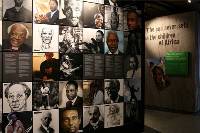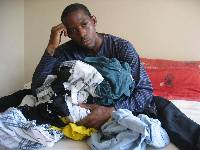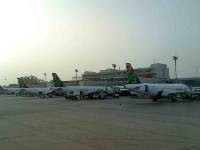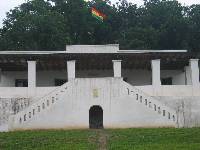Profile
Blog
Photos
Videos
Saturday 1st August 2009
Finally arrived at the Kokrobitey Institute in Accra, Ghana, just after one in the morning. The two Ghanaians who drove me here, Yaw and Patrick, illustrate what I wrote about earlier in regard to languages: Patrick speaks three and Yaw speaks eight (or was it nine including English?)
The Institute is beautiful; a place of learning where we foreigners are encouraged to respect Ghanaian traditions as we learn a little about this country, customs, culture. It is situated on the beach which means there are probably not as many mosquitoes as there would be in an inland area (mosquitoes don't breed in salt water). Rooms sleep between two and ten people with shared washroom facilities.
For an example of the hospitality of the people - I can simply tell you about my room mate Samuel. I woke him up with my noisy, wheezing entry and instead of grumbling as many people would, he rose from bed, greeted me, turned his mobile phone into a light so I could see where to put my things, showed me to the bathroom and warned me we had an early wake up call for the Saturday morning. I know it's a travel-writing cliché but I have nothing but love and respect for my brothers and sisters here and they are some of the most accommodating folks you could ever hope to meet.
The true beauty of this course is that it is comprised of Ghanaians (Ghana suffered perhaps the worst of all the African countries from trans-atlantic slavery) and Americans and British. We all have contributions to make, we're all on a journey of learning and we all will hopefully leave with a better idea of the institution of transatlantic slavery and its legacies.
That wake-up call was real early - 6am! A guy beating a drum on a beautiful Ghanaian morning is still a pain when you have only had about 5 hours sleep after hours of travelling from another continent. Breakfast, introductions, then onto a coach for a two hour drive to Asin Manso, a site where enslaved Africans who had been transported overland were washed, sorted and branded before being taken to the castles. Much is made of the 'walking in the footsteps of my ancestors' frame of mind and so the guide invited us to place our hands on the person in front of us, close our eyes and follow part of the trail. African-Americans returning home would perhaps like this but personally, I thought this style was a little too 'in your face'. Sometimes subtlety works a little better.
We then went onto Elmina Castle which is an astounding relic of European and African trading. Contrary to popular misconceptions, the relationship between Europeans and Africans was not immediately one of exploitation. Gold, silver and other commodities were traded long before enslaved Africans became seemingly the best thing this continent had to offer.
The shocking conditions in which enslaved Africans were kept does not make for easy viewing. The same warehouses and stock rooms that used to store grain and gold and other such goods were later used for living, breathing humans. The tour guide would clang us shut into a dark, mostly airless room for a few minutes for us to experience what the enslaved African would have felt. However, it does not compare - the hours and days and weeks that they may have stayed there are unimaginable. And this was before the horrors of the middle passage.
However, due to the fact that we have university lecturers and the like on this trip with us, we couldn't help but criticise the way in which Elmina Castle has been 'restored'. Instead of using similar techniques to the ones that were used 500 years ago, modern historians have simply used modern wood, paint and worst of all concrete. I said to Samuel, the archaeology PhD student, when I become president of Ghana, I will put him in charge of restoring the country's rich heritage in an authentic fashion. His response? "Sure!"
D
- comments










